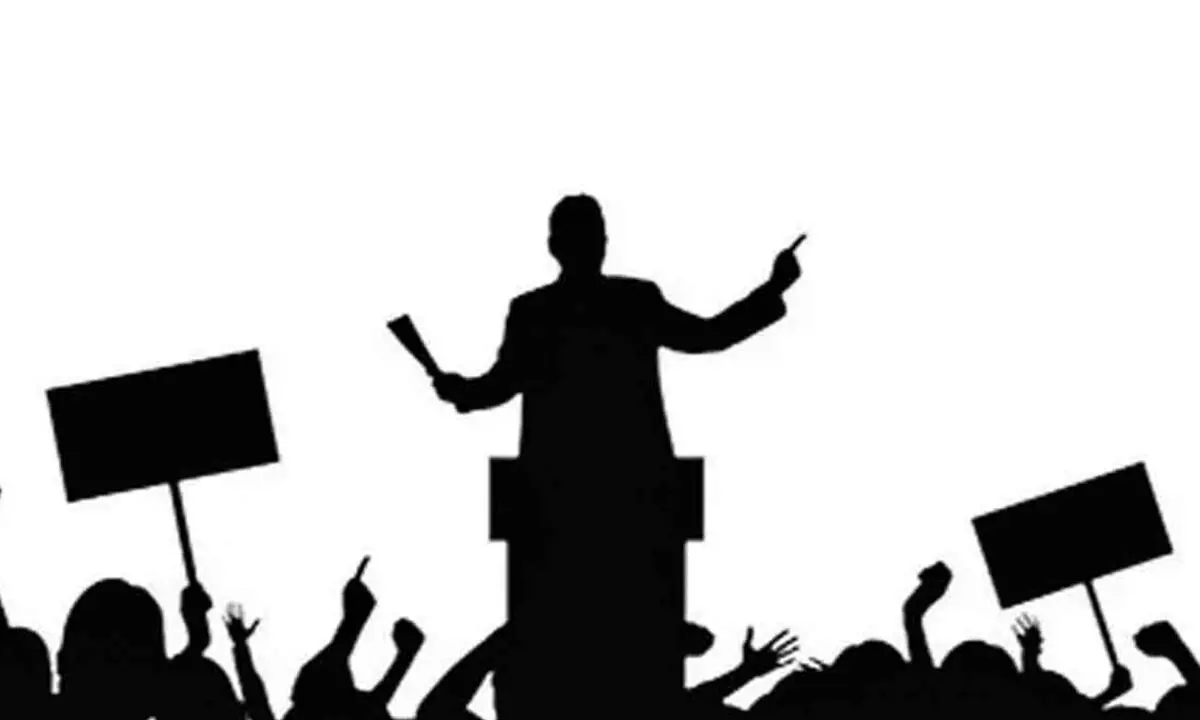From Streets to Screens: The Evolution of Civil Disobedience
Civil disobedience, historically a cornerstone of social change, has experienced a significant evolution. Traditionally grounded in physical demonstrations, it now extends into digital realms, providing new avenues for activism and participation. Understanding this transformation is essential for comprehending modern political activism's landscape.
1. The Rise of Digital Activism
Digital platforms have revolutionized civic engagement, allowing activists to connect, share information, and coordinate actions on an unprecedented scale. This shift has enabled movements to transcend traditional geographical and logistical barriers, strengthening their impact globally.
In this digital landscape, social media and online forums play crucial roles. They enable the rapid dissemination of information and ideas, fostering a global dialogue that reaches far beyond localized efforts. Activists now harness the power of viral campaigns to draw attention to critical issues, ensuring that their messages resonate widely and swiftly.
2. Hybrid Forms of Engagement: Blending Streets and Screens
The evolution of civil disobedience has not rendered traditional methods obsolete; instead, it has fostered hybrid activism that combines digital tools with physical presence. This blend enhances the effectiveness of social movements, as digital platforms facilitate organization, while physical demonstrations provide tangible expressions of collective dissent.
For example, digital calls to action can rally supporters for mass demonstrations, transforming online solidarity into physical presence. This synergy between online and offline tactics amplifies the reach and impact of activism, ensuring that each form of engagement reinforces the other.
3. The Power of Art and Visual Culture in Digital Disobedience
Visual culture plays an increasingly important role in modern civil disobedience. Art and multimedia not only document but also enrich social movements by offering powerful, creative expressions of dissent. Artistic interventions, both digital and physical, capture public attention, convey messages emotively, and inspire broader participation.
Digital art, encompassing everything from memes to sophisticated installations, engages audiences visually and intellectually. It challenges them to reconsider entrenched narratives and, in doing so, often shifts public opinion and mobilizes action.
4. Challenges and Considerations
Transitioning to a digital platform brings both opportunities and challenges. Misinformation and surveillance pose significant threats, demanding that activists employ stringent defensive strategies. Moreover, the digital divide risks excluding marginalized voices further, highlighting the importance of increasing accessibility and inclusivity within digital activism.
Strategically addressing these challenges is crucial. This involves promoting media literacy to combat misinformation and prioritizing secure communication to protect both the activists and their messages from interception or censorship.
5. Maintaining Legitimacy in the Digital Age
As digital tactics become more prevalent, maintaining the legitimacy and ethical grounding of civil disobedience remains vital. Transparency in motives, clarity in communication, and consistency in ethical practices build trust and credibility, ensuring broader support and respect for activist efforts.
Community engagement is fundamental in legitimizing these efforts. Activists must work alongside affected communities, ensuring their input and priorities shape the actions and objectives of movements, thus promoting inclusivity and accountability.
Harnessing Technology: The Digital Age of Political Movements
The advent of digital technology has provided political movements with tools that have transformed strategies and broadened reach. From social media to data analytics, digital technology facilitates organization, mobilization, and advocacy, fundamentally altering activism's landscape.
1. The Power of Social Media
Social media has become a cornerstone of modern activism, providing powerful platforms for communication and collaboration. These networks enable marginalized voices to challenge prevailing narratives, fostering inclusive dialogues that can catalyze societal change.
For instance, social media's capacity for rapid mobilization allows activists to respond promptly to political developments, organizing protests and rallies through real-time communication. Additionally, platforms facilitate the dissemination of suppressed information, circumventing censorship to ensure diverse perspectives reach public consciousness.
2. Digital Tools for Organization and Coordination
Beyond social media, a plethora of digital tools enhance the organization and coordination of political movements. Data analytics empowers activists to refine strategies based on insights derived from supporter behavior and engagement patterns.
Encrypted messaging platforms offer secure means of communication, protecting conversations from surveillance. Similarly, livestreaming offers transparency and fosters accountability by broadcasting events live, connecting global audiences to on-the-ground realities.
3. The Rise of Virtual Activism
The digital age has spurred the growth of virtual activism, enabling individuals to participate in political action from anywhere. Online petitions, digital protests, and hacktivism offer accessible avenues for engagement, widening participation and enhancing inclusivity.
These efforts allow individuals to express solidarity from afar, encouraging broader coalitions and collaborations. Together, these tools create an ecosystem where geographic location is no longer a barrier to contributing meaningful support to various causes.
4. Challenges and Considerations
While digital activism offers significant advantages, it also presents challenges such as misinformation, digital surveillance, and unequal access. Addressing these requires careful navigation and robust strategies.
Activists must combat misinformation by disseminating accurate information, while digital literacy becomes more critical for identifying reliable sources. Protecting privacy through encryption and advocating for digital equity ensures broader participation in digital activism.
5. The Power of Digital Storytelling
Digital storytelling is a potent tool for activism, allowing narratives to be shared widely and effectively. By harnessing blogs, podcasts, and interactive media, activists can convey complex messages and foster empathy across cultural and geographic divides.
These stories connect individuals, build solidarity, and challenge dominant narratives by showcasing diverse experiences and perspectives. Through digital media, activists can engage, educate, and inspire communities, catalyzing collective action for change.
Global Unity: The Role of Mass Mobilization in Modern Activism
Mass mobilization is a critical aspect of contemporary activism, involving coordinated efforts to bring people together for collective action. This approach builds momentum and exerts political pressure, catalyzing policy changes and societal transformations.
1. The Power of Collective Action
Mass mobilization underscores the idea of strength in numbers, uniting individuals around common objectives to exert collective influence. By fostering coalitions and expanding movements, grassroots organizers increase their negotiating power and enhance their ability to impact political decisions.
These efforts often bridge divides, bringing diverse communities together to advocate for shared causes. This collective approach amplifies voices, raises public awareness, and keeps issues at the forefront of political discourse, demanding action from policymakers.
2. Mass Mobilization in Action
Examples of mass mobilization are abundant, spanning a range of issues from social justice to environmental protection. Movements advocating for racial equality and gender rights rely on mobilizing large groups to demand systemic changes, increase visibility, and elevate critical conversations.
By organizing high-profile demonstrations and campaigns, these movements harness public attention and galvanize widespread support. Mass mobilization becomes a rallying cry, uniting disparate voices in pursuit of equitable solutions that enhance societal wellbeing.
3. The Impact of Global Events
Global events often act as catalysts for mass mobilization, exposing inequities and sparking collective action. Crises highlight social and economic disparities, prompting individuals to mobilize for fairer distribution of resources and opportunities.
The shared experiences of such events foster unity across diverse groups, driving coordinated advocacy for global solutions. By mobilizing effectively, activists can not only respond to current challenges but also drive long-term shifts towards more equitable policies.
4. Challenges and Considerations
While mass mobilization is an effective tool for change, sustaining impetus requires strategic planning. Maintaining momentum is essential for long-term success, necessitating adaptable strategies that keep participants engaged and motivated.
Ensuring inclusivity and diverse representation is critical for authentic advocacy. Additionally, navigating opposition from entrenched interests requires resilience and strategic communication to counter any narratives that threaten movement integrity.
By understanding mass mobilization's dynamics and addressing its challenges, activists can efficiently harness collective power to influence political trajectories and effect meaningful change.
Q&A
-
What are protest movements, and how do they differ from grassroots campaigns?
Protest movements are organized efforts by groups of people to express dissent or seek change regarding political, social, or economic issues. They often involve public demonstrations and can be spontaneous or planned. Grassroots campaigns, on the other hand, are typically more localized and community-driven, focusing on mobilizing individuals at a local level to influence broader change. While both aim for change, grassroots campaigns often emphasize building from the ground up with community involvement as a central tenet.
-
How does civil disobedience play a role in advocacy networks?
Civil disobedience is a strategy used within advocacy networks to draw attention to specific issues by deliberately breaking certain laws in a nonviolent manner. This approach can highlight perceived injustices and generate public sympathy or media coverage, thereby applying pressure on policymakers. Advocacy networks use civil disobedience as a means to galvanize support and demonstrate the urgency and moral imperative of their causes.
-
What are the advantages of digital campaigning compared to traditional methods?
Digital campaigning offers numerous advantages, such as reaching a global audience quickly and efficiently, reducing costs associated with traditional campaigns, and enabling real-time interaction with supporters. It allows for targeted messaging and data-driven strategies to optimize engagement and impact. Additionally, digital platforms can rapidly disseminate information and mobilize supporters, making them invaluable tools for modern advocacy efforts.
-
In what ways do policy pressure groups influence government decisions?
Policy pressure groups influence government decisions by lobbying policymakers, conducting research to support their positions, and mobilizing public opinion. They often engage in direct dialogue with legislators and use media campaigns to highlight their issues. By providing expert knowledge and advocating for specific policies, these groups can shape legislative agendas and sway public policy in their favor.








